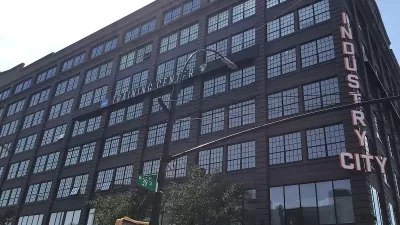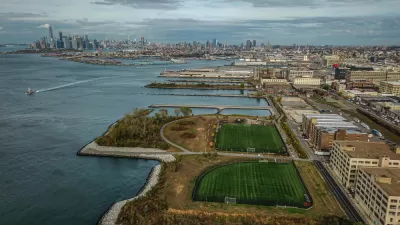Neighborhood rezonings that disproportionately displace minority residents could violate the Fair Housing Act, advocates say.

With five New York neighborhood rezonings complete in Mayor Bill de Blasio's Housing New York Plan, advocates are pressing the city to add a racial impact component to its environmental review process before undertaking further land-use reforms. Not doing so could put the city in violation of the Fair Housing Act, they warn.
In Brooklyn Eagle, Chase Brush explains that the City Environmental Quality Review currently includes an analysis of a project's potential to cause "secondary" displacement by creating a "change in socioeconomic conditions." But its scope is limited to impacts on low-income tenants of small buildings in areas that are not already experiencing gentrification or displacement.
Advocates, including State Senator Julia Salazar and District Leader Tommy Torres, want the environmental review to require an explicit analysis of how rezonings and other actions could impact the racial and demographic composition of neighborhoods—particularly whether they would have a "disparate impact" on Black and brown residents. The push comes in part from the experience in Williamsburg, where displacement of minority residents "quickened noticeably" after the neighborhood was rezoned in 2005.
"In their experience, rezonings have the potential to accelerate speculation and development in a neighborhood, which can in turn lead to higher rents and increased levels of tenant harassment and evictions," Brush writes. "And those changes can be especially devastating in low income and minority areas, two features that characterize many of the neighborhoods de Blasio has targeted in his rezonings."
FULL STORY: Demands for racial impact studies grow amid de Blasio rezonings

Alabama: Trump Terminates Settlements for Black Communities Harmed By Raw Sewage
Trump deemed the landmark civil rights agreement “illegal DEI and environmental justice policy.”

Planetizen Federal Action Tracker
A weekly monitor of how Trump’s orders and actions are impacting planners and planning in America.

Why Should We Subsidize Public Transportation?
Many public transit agencies face financial stress due to rising costs, declining fare revenue, and declining subsidies. Transit advocates must provide a strong business case for increasing public transit funding.

Understanding Road Diets
An explainer from Momentum highlights the advantages of reducing vehicle lanes in favor of more bike, transit, and pedestrian infrastructure.

New California Law Regulates Warehouse Pollution
A new law tightens building and emissions regulations for large distribution warehouses to mitigate air pollution and traffic in surrounding communities.

Phoenix Announces Opening Date for Light Rail Extension
The South Central extension will connect South Phoenix to downtown and other major hubs starting on June 7.
Urban Design for Planners 1: Software Tools
This six-course series explores essential urban design concepts using open source software and equips planners with the tools they need to participate fully in the urban design process.
Planning for Universal Design
Learn the tools for implementing Universal Design in planning regulations.
Caltrans
Smith Gee Studio
Institute for Housing and Urban Development Studies (IHS)
City of Grandview
Harvard GSD Executive Education
Toledo-Lucas County Plan Commissions
Salt Lake City
NYU Wagner Graduate School of Public Service





























